Does your pup have wax stuck in their fur? If so, you’re probably wondering how to get it out. Wax can be a tricky substance to remove from dog hair since it doesn’t dissolve easily in water or come off with just brushing. However, there are some simple and effective ways of removing wax from your pet’s coat without causing them any discomfort or damage.
Is Candle Wax Toxic To Dogs?
Before attempting to remove wax from your dog’s fur, you should check to make sure it isn’t a type of wax that could be potentially toxic. Candle and paraffin waxes are generally safe, but beeswax or some types of candle dyes can be dangerous if ingested by dogs. If the wax is on their fur and can’t be easily removed, it is best to take your pup to the vet for a professional opinion.
Does Vinegar Remove Candle Wax?
Vinegar is a safe and effective way to remove wax from dog hair. The acetic acid in vinegar helps break down the bonds that hold the wax in place on your puppy’s fur, making it easier to remove. To use vinegar for wax removal:
- Gently brush or comb out as much of the wax as possible.
- Mix one part white vinegar and two parts warm water in a bowl or container.
- Dip a clean washcloth or rag into the mixture and gently rub it into the waxed area of your dog’s coat. The acetic acid will dissolve the wax, allowing you to easily wipe away the residue.
- Rinse the area with warm water to remove any remaining wax or vinegar residue.
- Dry your pet’s fur thoroughly with a towel, and finish by brushing out any tangles or matted hair.
It may take several treatments to completely remove all of the wax from your pup’s fur, so be sure to repeat this process as needed until the wax is gone. Additionally, if you notice any irritation or discomfort on your pup’s skin after using vinegar, discontinue use and consult a veterinarian for advice. [1]
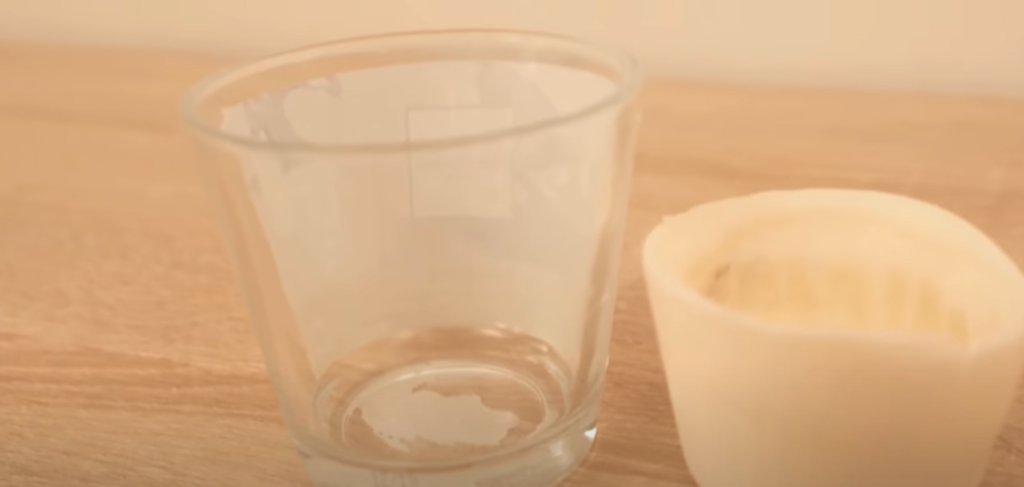
What Candle Scents Are Toxic To Dogs?
It’s important to note that some candle scents aren’t safe for dogs. Dogs have much more sensitive noses than humans, and strong smells can be irritating or cause respiratory issues. Avoid using candles with heavily fragranced oils like cinnamon, cloves, or nutmeg around your dog. If you think your pet has been exposed to a toxic candle scent, look out for signs of distress such as sneezing or coughing. If your dog appears to be unwell after being exposed to a strong smell, it’s best to take them to the vet for further care. [2]
Step-By-Step Guide
Let’s take a closer look at the process of removing wax from a dog’s coat.
Hold Your Dog Properly
Before you start to get wax out of your dog’s hair, it is important to ensure that you have a secure and comfortable grip. Depending on the size of your pet, this could mean having an extra pair of hands to help keep them still. Also make sure that you are gentle as you do not want to cause any unnecessary pain or distress to your pup.
Use Mineral Oil Or Baby Oil
When it comes to removing wax from your dog’s hair, you can try an oil treatment. Mineral oil or baby oil are both good options and easy to find at any grocery store. Start by thoroughly combing the affected area with a wide-toothed comb or a slicker brush if necessary. This will help loosen some of the wax. Apply a generous amount of oil to your hands and massage it into the affected area, working through the fur with your fingers. Let it sit for 10-15 minutes before combing and brushing it out. Repeat as necessary until all of the wax has been removed.
Alternatively, you can use a spray bottle filled with mineral or baby oil to coat the area and then comb it out. Finishing off with a warm bath will help remove any remaining residue. For heavily matted fur, you may need to clip the hair around the wax before using oil treatments. Do not use hot water or heat when removing wax from your dog’s fur as this can cause scalding or burning.
Start Combing
The first step in getting wax out of dog hair is to start combing the affected area. You may need a wide-tooth comb or brush, depending on how much wax is present. Begin by combing through the area gently and slowly, working in small sections until all the excess wax has been removed. If necessary, use a fine-tooth comb or brush to get the last bit of wax out.
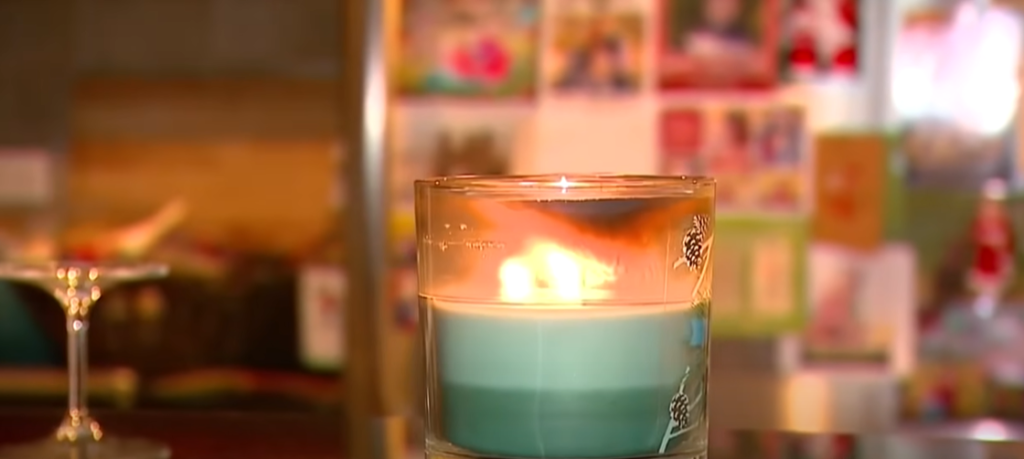
Soothing Shampoo
The best way to get wax out of dog hair is to first use a soothing shampoo. This will help break down and dissolve the wax, making it easier to remove from fur. Use lukewarm water instead of hot water as this may cause further irritation and dryness in the skin. Apply the shampoo gently in small circular motions, taking care not to rub too hard. Once the wax has been dissolved, use a clean towel to wipe away as much of it as possible.
Using Hair Clipper (Optional)
If the affected area is not too large, you can use a hair clipper to cut off any wax that is stuck in your dog’s fur. This is an effective way of getting rid of wax quickly and easily. Be sure to choose a clipper that has adjustable settings so you don’t accidentally cut off too much fur from your pup. [3]
Tips For Removing Wax From Dog Hair
- Start by brushing or combing your dog’s fur to remove any dried wax and excess debris. Be sure to take extra care when brushing areas of thick hair, as the wax can become tangled in the fur and harder to remove.
- For small spots of wax, you can use a damp cloth or cotton ball to dab and lift the wax from your dog’s fur. If you have a larger area of wax to remove, try using a pair of tweezers or a blunt knife to scrape away the wax.
- Once you’ve removed any excess wax, use a pet-safe shampoo and warm water to wash away any residue that may remain. If you’re dealing with a large area of wax, consider using an all-natural enzyme cleaner to break down the buildup and help lift it away from your dog’s fur.
- After cleaning the affected area, apply a small amount of coconut oil or olive oil onto the wax stain. This will help to loosen the wax and allow it to come away from your dog’s fur more easily.
- Once all of the wax has been removed, use a blow dryer on a low heat setting to dry the area thoroughly. If possible, try not to rub or pat the area too much as this can cause further irritation and distress for your dog. [4]
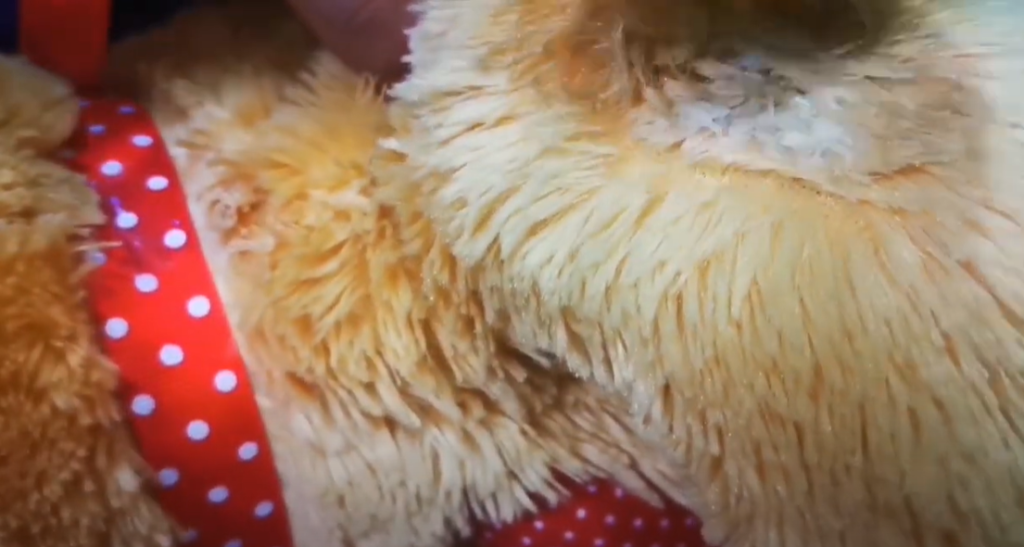
FAQ
How do you get ear wax out of dog hair?
The removal of ear wax from a dog’s fur is best done by first cleaning the area with a mild shampoo and water solution. Once the area is clean, you can use an ear cleaner specifically designed for dogs to gently remove any residual wax from the hair. To finish off, brushing your pet’s coat can help thoroughly remove any remaining wax. If the wax is difficult to remove, you can consider having your dog professionally groomed. Additionally, if the ear wax appears to be excessive or has a bad smell, it may indicate an infection and should be checked by your veterinarian.
How do you get dried wax out of hair?
If the wax has already hardened and dried, it can be more difficult to remove from dog hair. The first step is to use a wide-tooth comb or brush to break up the wax and get as much of it out as possible. Then, you can use scissors to carefully trim away any remaining bits of wax near the skin. Once the wax has been removed, you can use a few tried-and-true methods to get the remaining residue out of your dog’s fur. One option is to rub mayonnaise onto the affected areas of your dog’s coat and let it sit for 30 minutes or so before brushing it out. You could also opt for a natural oil like jojoba or almond to help loosen the wax and make it easier to brush out.
How toxic is wax for dogs?
Wax itself is a non-toxic substance, and when it is used on dogs in the form of candles or products like fur balms, waxes, and ointments designed specifically for dog hair, it should pose no risk to their health. However, if your pet has gotten into something you didn’t know contained wax, it’s best to take them to the vet for a checkup. Ingesting or inhaling large quantities of any substance, including wax, may lead to serious health problems.
How do you get wax out of carpet?
Wax on a carpet is usually caused by candles, wax melts, or hot glue. To remove it safely and effectively without damaging your carpets, you will need to use an appropriate removal method. The most common way of removing wax from the carpet is by using a hairdryer. Set the dryer to its lowest setting and point the nozzle at the wax. The heat from the dryer will melt the wax, allowing you to remove it with a blunt knife or scraper. Move slowly and be gentle to avoid damaging your carpets. Once all of the wax has been removed, use a vacuum cleaner to pick up any remaining pieces.
Should you remove earwax from dogs?
It is important to understand that the presence of earwax in a dog’s ears is generally healthy and normal. The wax traps dirt, dust and debris to protect the delicate inner structures of the ear. The amount and consistency of your pet’s wax production can change over time with age, diet or other environmental factors. It also differs from breed to breed.If your dog appears to have an excessive amount of wax buildup, it is best to consult with your veterinarian first before attempting any kind of cleaning or removal process. Your vet can diagnose the cause and advise you on the best course of action.
Does it hurt dogs to pluck ear hair?
No, it does not hurt dogs to pluck out their ear hair. It is an incredibly safe procedure for them and can be done with a pair of tweezers if you do it carefully. However, if you are uncomfortable plucking your dog’s hair or don’t feel confident that you can do it without causing any pain, then it is best to consult a groomer or a vet for assistance. Once you have removed the hair, it’s important to make sure that the ears are kept clean and dry in order to prevent any infections. You should also check for ear mites and other parasites regularly, as these can be common problems in dogs with longer ears.
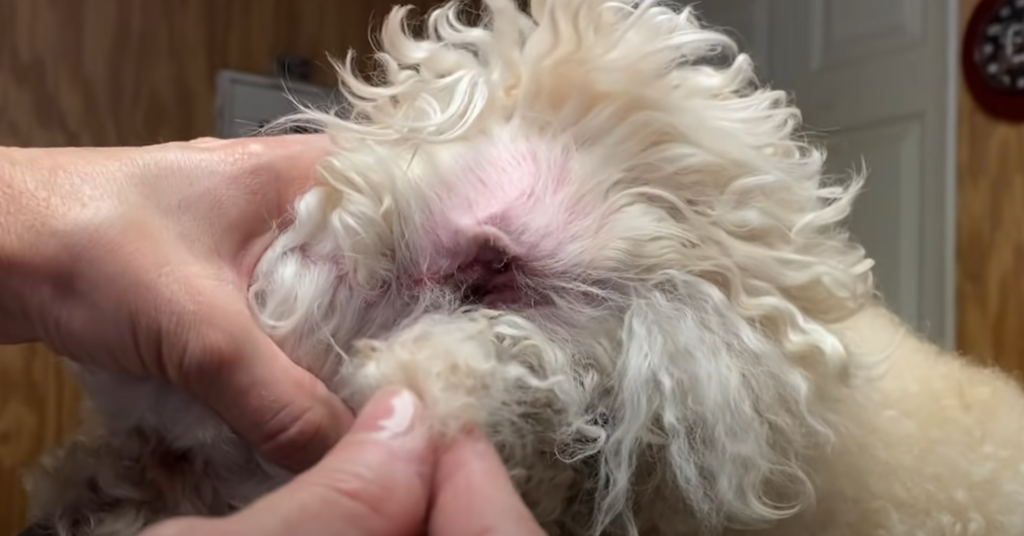
What dissolves dried wax?
If the wax is already dried, it can be difficult to remove without using a solvent. Common solvents that dissolve wax include mineral spirits, rubbing alcohol, vegetable oil, and WD-40. Before applying any of these substances to your dog’s fur, you should do a spot test on an inconspicuous area to make sure there will be no adverse reaction.
Does vinegar remove wax?
Yes, white vinegar can be used to remove wax from dog hair. Start by diluting 1 part vinegar with 3 parts warm water and use a spray bottle to thoroughly coat the affected area. Allow the mixture to sit for 5-10 minutes before blotting it up with a clean cloth or paper towel. Next, use a second clean cloth or paper towel to blot the area with warm water. Lastly, use a wide-tooth comb or brush to carefully remove any remaining wax from the hair. This method is safe for all types of dog fur and may even help restore shine to dull coats. Be sure to test in an inconspicuous spot prior to using it on your pet’s entire coat.
What breaks down wax in hair?
There are several household products that can help break down the wax in dog hair:
- Vinegar – Mix one part vinegar with two parts warm water. Wet a washcloth and dab it onto the area of the coat where the wax is located. Rub gently until you have worked up a lather, then rinse thoroughly with warm water.
- Peanut Butter – Peanut butter is a great tool for removing wax from dog hair. It can be used in the same way as vinegar, with a wet washcloth and gentle rubbing motions to loosen the wax. When finished, rinse thoroughly with warm water.
- Coconut Oil – Coconut oil is an excellent way of naturally breaking down wax in dog hair. Massage the oil into the affected area and allow it to sit for a few minutes before rinsing thoroughly with warm water.
- Pet Shampoo – If you do not have any other supplies on hand, pet shampoo can be used to break down wax as well. Work up a lather with warm water, then rinse thoroughly. After you have broken down the wax, it’s time to remove it from your pup’s fur. Use a wide-toothed comb or a soft bristle brush to gently loosen and remove the wax from their fur.
Useful Video: How To Safely Remove Candle Wax From A Dog
Conclusion
Once you have successfully gotten the wax out of your dog’s fur, it is important to take preventive measures against future incidents. Regular grooming can help keep your puppy’s coat healthy and free of debris that could cause a buildup of wax. Additionally, keeping candles away from places where your pup has access will decrease the chances of them getting into the wax again. With these tips, you can keep your pup’s fur clean and free of wax in the future.
References:
- https://www.hepper.com/remove-candle-wax-from-dog-fur/
- https://petcosset.com/how-to-get-wax-out-of-dog-hair/#steps-to-remove-wax-from-dog-hair
- https://bestdognailgrinder.com/how-to-get-wax-out-of-dog-hair/
- https://pethelpful.com/pet-ownership/How-to-get-candle-wax-off-of-cat-or-dog-fur





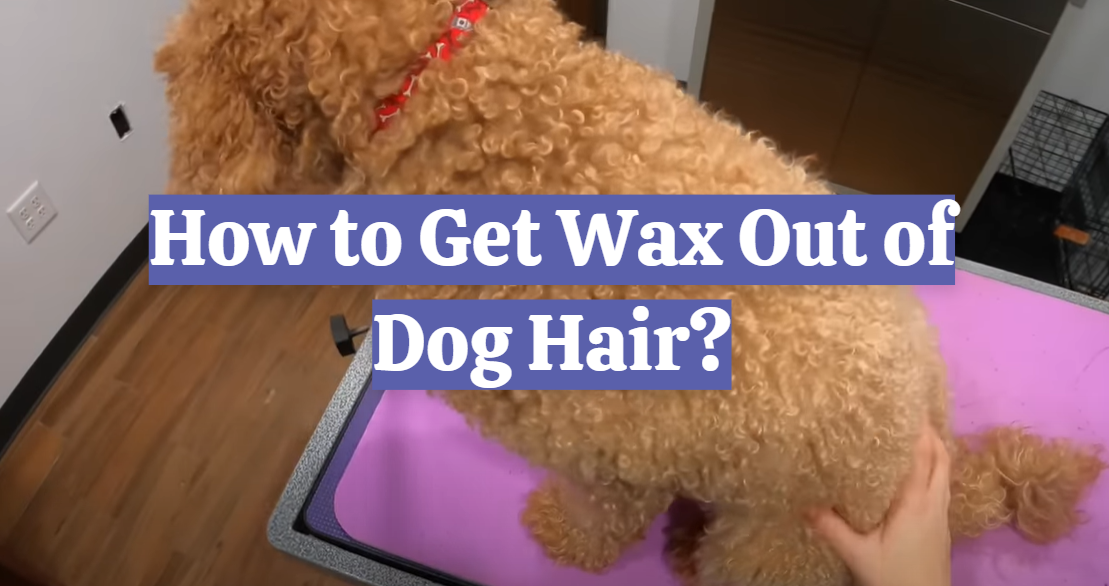
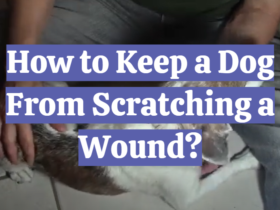

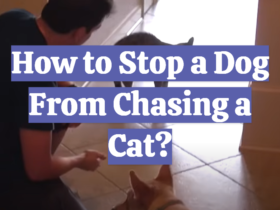
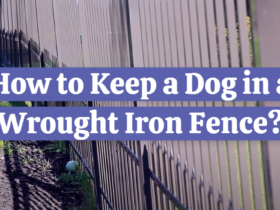
Dealing with wax in my dog’s fur was quite a challenge, but I found a simple yet effective method. First, I placed a few ice cubes in a plastic bag and gently rubbed them over the wax until it became brittle. Once the wax was hardened, I carefully scraped it off with the edge of a credit card, taking care not to tug on my dog’s hair. A warm bath afterward helped remove any remaining residue. This technique saved me a trip to the vet and prevented unnecessary stress for my furry friend.
My mischievous pup managed to get candle wax stuck in his fur during a cozy night at home. Panicking at first, I remembered reading about using a hairdryer to tackle the issue. I set the hairdryer on a low heat setting and directed it towards the wax, keeping a safe distance to avoid burning his skin. As the wax softened, I used a comb to gently work through the hair, removing the softened wax with ease. This method not only spared my dog from discomfort but also kept me from resorting to drastic measures.
Dog grooming mishaps are inevitable, and one day my pooch ended up with a waxy mess after an unfortunate encounter with a melted candle. My go-to solution involved using a combination of baking soda and coconut oil. I mixed equal parts of both to create a paste and applied it to the wax-infested area. The baking soda absorbed the wax while the coconut oil helped loosen it from the hair. After letting it sit for a while, a thorough brushing took care of the residue, leaving my pup’s coat clean and soft.
When my adventurous dog decided to investigate a spilled candle, I found myself faced with the challenge of removing wax from his fur. Opting for a more natural approach, I turned to olive oil. I applied a generous amount to the wax, allowing it to soak in and break down the sticky substance. Gently combing through his fur, the wax started to loosen, and a warm bath completed the process. The olive oil not only proved to be an effective wax remover but also left my dog’s coat shiny and moisturized.
Discovering candle wax in my dog’s fur led me to an unexpected solution – a paper bag and a warm iron. Placing the paper bag over the wax-covered fur, I ran a warm iron over it, allowing the wax to transfer onto the paper. This method worked like a charm, and I was amazed at how easily the wax lifted off my dog’s hair. A quick brushing afterward ensured that any remaining bits were removed, leaving my pup’s coat unharmed and wax-free.
A recent candlelit dinner turned into a fur fiasco when my dog, in his excitement, brushed against a votive and ended up with wax in his fur. Remembering a tip I had read about using parchment paper, I cut a piece to fit the affected area. With a low-heat setting, I carefully ironed over the parchment paper. The wax melted and adhered to the paper, leaving my dog’s coat untouched. A quick brush afterward, and he was back to his silky, wax-free self. This hack saved me a potential grooming headache and kept my pup calm throughout the process.
A playdate with another dog turned chaotic when they knocked over a scented wax warmer, leaving my pooch with a sticky situation. Not wanting to resort to harsh chemicals, I opted for a cornstarch remedy. I sprinkled cornstarch liberally on the wax-covered fur and gently massaged it in. The cornstarch absorbed the wax, and after letting it sit for a while, a thorough brushing removed both the cornstarch and the unwanted wax. My dog’s coat was left fluffy, and I was relieved to have found a natural solution to the unexpected grooming challenge.
Accidents happen, and in my case, a knocked-over candle led to wax-coated paws. To tackle this, I used a method involving a hairdryer and a disposable diaper. After cooling the wax with ice, I used the hairdryer on a low setting to melt the remaining wax. Placing a diaper over my dog’s paw, I applied gentle pressure to absorb the melted wax. This innovative approach proved effective, preventing further mess, and my dog seemed surprisingly calm throughout the entire process.
Candle-lit relaxation turned into a hairy ordeal when my dog decided to explore the aroma up close. Seeking a non-invasive solution, I turned to my kitchen for a jar of peanut butter. Applying a thin layer over the wax, I let it sit for a while. The oils in the peanut butter worked wonders, loosening the wax from my dog’s fur. A gentle combing followed by a warm bath completed the process, leaving my pup with a clean coat and me with a newfound appreciation for pantry solutions in pet care.
Finding melted wax on my dog’s tail after a power outage led me to an unconventional yet effective remedy—mayonnaise. Applying a small amount of mayonnaise to the wax-coated fur, I let it sit for about 15 minutes. The oils in the mayonnaise softened the wax, making it easy to comb through. A quick rinse and a dab of dog-friendly shampoo, and my dog’s tail was restored to its fluffy glory. This kitchen-cabinet solution proved to be a lifesaver, leaving both of us stress-free after an unexpected wax encounter.
An evening of relaxation turned into a grooming challenge when my dog, in a moment of curiosity, got too close to a candle. Panic set in, but recalling a tip I’d read about using a vinegar solution, I mixed equal parts water and white vinegar. Gently dabbing the affected area with the solution, the wax started to dissolve. A comb easily worked through the softened wax, and a rinse with mild dog shampoo left my pup smelling fresh and looking wax-free. This vinegar trick proved to be a gentle yet effective solution, saving the day and keeping my furry friend calm.
After a chaotic play session resulted in my dog having wax-covered paws, I had to think on my feet. Remembering an old trick involving a brown paper bag and a warm iron, I improvised with what I had – a grocery bag and a hair straightener set on low heat. Placing the bag over the wax, I ran the straightener over it, allowing the wax to transfer onto the bag. The process required patience, but the outcome was impressive – clean paws and a relieved dog. This makeshift solution worked surprisingly well and saved me a trip to the vet for what turned out to be a common household mishap.
A candle-topped coffee table proved too tempting for my dog’s wagging tail, resulting in a waxy mess. Not wanting to resort to harsh chemicals, I remembered a suggestion involving coconut oil. I applied a small amount to the wax, letting it sit to work its magic. The coconut oil effectively loosened the wax, making it easy to comb out. A warm bath afterward ensured any remaining residue was washed away. This natural approach not only solved the immediate issue but also left my dog’s coat looking shiny and well-conditioned.
A spilled candle left my dog with wax-coated fur, and the struggle was real until I discovered the power of a silicone spatula. After cooling the wax with an ice pack, I gently used the spatula to lift and break apart the hardened wax. Taking my time and being cautious, I managed to remove the majority of the wax without causing any discomfort to my dog. A soothing post-grooming session massage with coconut oil left my pup feeling pampered and back to his lively self.
A mishap during a candlelit dinner left my dog with wax on his back. Rather than panicking, I opted for a method involving parchment paper and a warm iron. Placing the parchment paper over the wax, I carefully ironed over it on a low heat setting. The wax adhered to the paper, leaving my dog’s fur untouched. A light brushing afterward removed any remaining bits, and a treat for my patient pup made the entire experience surprisingly stress-free. This parchment paper and iron technique turned what could have been a grooming disaster into a straightforward and successful solution.